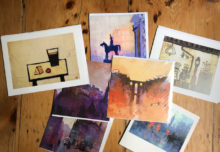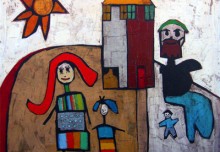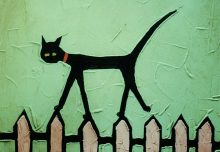MOOD BOARDS, BRAINSTORMS, MIND-MAPS, STORYBOARDS, and PIN BOARDS
There is a way of solving problems that is almost magic in comparison to the usual way. Of course I refer to mood boards, brainstorms, pin boards etc. You probably worked that out because you saw the title of this blog.
What happens when you create a board is that a new different part of your brain or mind is inspired to create different pathways and connections. These can suddenly, or slowly, lead to those eureka moments. And they are really satisfying and effective.

HOW
So what you have to do is create a big blank surface with a method of making marks. We often see one on films, about super efficient detectives solving murders. This is a pin board on the wall of their office. They stick photos of witnesses and suspects and draw lines linking them whenever they get inspiration or clues. This is one way. But equally impressive and effective is the laboratory blackboard where scientists explore numbers and formulas and suddenly get inspired to solve problems. Detectives and scientists seem to be especially efficient when they work out answers on a large scale. They don’t do it in a notebook or a bit of paper. This is partly because it makes better films, but also because it actually works. Another example are mood-boards where interior designers collect a variety of samples to create a collection of things together, like carpet, paint colours, wallpaper, pictures of lighting and furniture.
But is any of this applicable to artists? Well yes, if you include the whole range of an artist’s necessary output workload. You may have seen previous blog posts where I describe the five dimensions of an artist’s creative art world. Put simply, these are… (1) making product, (2) marketing and selling, (3) office work and record keeping, (4) social contact and mixing, (5) finally research and development. All of these dimensions can throw up linked problem issues in an artist’s experience.
Phew. You can see more about the five dimensions in my blogs from the past, or my book.
https://www.colinruffell.com/books
WHY
So if an artist comes across a problem they can go a long way towards finding a good solution by brainstorming a mind-map onto a mood board or pin board. Examples of the type of problem might be… What to paint next? Or, where and how to get monetary reward for the effort? Or how to be famous? There are many others.
Let us say that you have a big art problem. The answer might not be obvious. So create your mind expansion board. Start in the middle with the problem simply put. Be prepared to change or develop this as you go along. Post other thoughts around the center as they spring to mind. Don’t introduce these pins in any order. The more random or side-track the better. Let your subconscious mind make the connections. Don’t try to justify or understand them at this stage.
Use colours or different display methods. Pen or felt tip pens. Photos, drawings or sketches. Doodles or quotes. Coloured chalks. Don’t try to make the board a nice neat object because our creative brainstorms don’t work that way.
The final solution won’t appear straight away. But as you start filling the spaces other links will appear. Especially if you display the board in a prominent position and keep coming back to it several times.
You will be making a ‘mind map’. These mind maps capture random thoughts that don’t have obvious links or meaningful answers. But they can spin off separate thoughts that are inspired by other brainwaves.
The beauty of these multi-dimensional thoughts is that they are not a list. A list only uses some sectors of our brains, and doesn’t utilise other parts. And we artists happen to have a special super ability to use these extra other parts because we are creative. We do not make our pictures or sculptures with the same bits of our mind that say accountants use to make their numbers work. Instead we use our dream, subconscious, creative minds to make art.
This special bit of our brains can be harnessed to answer these other questions as well. So our examples of what to make next, or how to sell our art, or how to be recognised properly, are available to us.
BUT
Here you can blame the exam focused school system that moulded your mind when you were a child and teenager. Exams are not good places to dream up answers. Your teachers knew this and made you think in a certain way. Lists and logic might get better exam results, happy teachers, and indoctrinated minds. But our artistic creative minds are our defence and secret weapon. And a mood board is how to explore and release it.
EXAMPLE
Pinterest is a useful tool and an example of an online visual board. That is why they call their collections ‘boards’. Each ‘pin’ is an illustration on the board. However there are no visible links between each pin. They do work to make a visual record of thoughts around a particular subject. And even better it is possible that the Pinterest system will find other pins on other peoples boards that inspire you. If you make a real board as well as an online Pinterest board you can have the advantages that both provide. Don’t just do one.
CONCLUSION.
If you haven’t yet, give it a go. It is fun, creative, and efficient.




